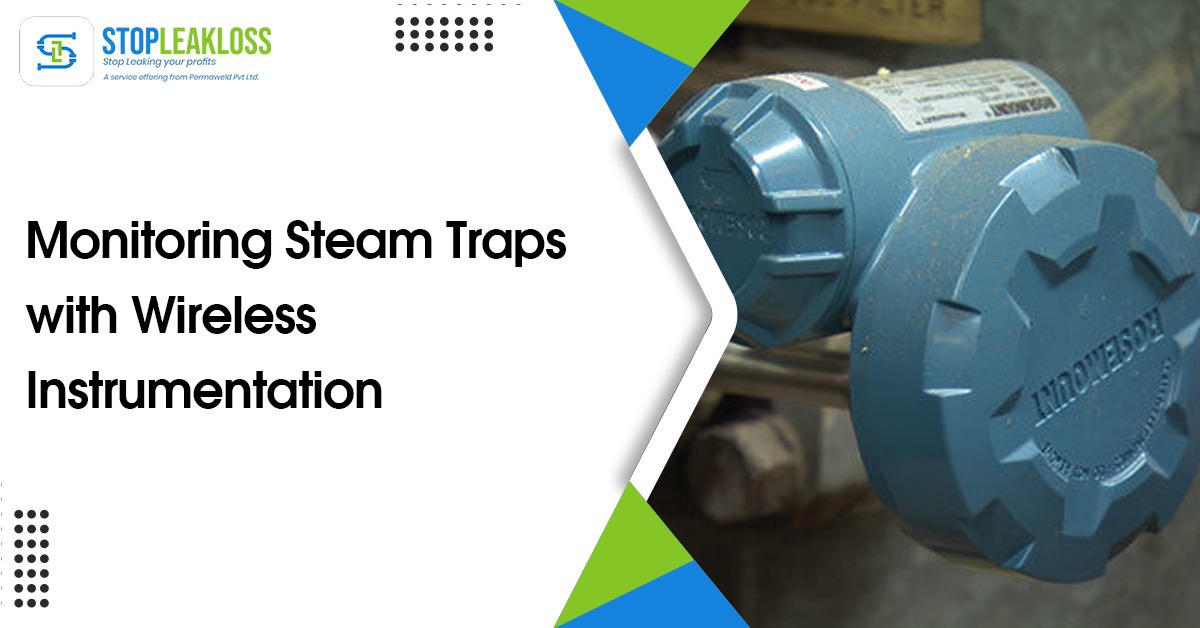
Monitoring Steam Traps with Wireless Instrumentation
Steam trap surveys- What are steam traps?
Steam trap survey, Dirt, which can clog or leak the trap, and pressure surges, which can harm internal components, are the two most common reasons for steam-trap failure. Thus, steam trap surveys might be required. In industrial process steam heating systems, both must be avoided. The main purpose of the steam trap is to divert surplus condensate from steam pipework to a drain or sewer. When the steam is present, the steam trap closes to maintain pressure. Steam traps are pretty dependable, however, they can fail open or closed.
If a steam trap fails to open, it discharges condensate and high-pressure steam down the drain or sewer, resulting in steam loss and increased energy expenses to create more vapour. In addition, the excessive steam loss might overwhelm the boilers.
Why are steam trap surveys needed?
Condensate will automatically back up into the steam line if a steam trap is jammed or fails to close, reducing the effectiveness of the heat transfer process. This will damage pipes and hurt heat exchanger bundles, humidifiers, and other related equipment. If the heat transfer process is harmed, the process may be stopped down until the trap, and any damage caused by the failed trap is fixed with the help of a steam trap survey.
Maintenance personnel have minor indications that the steam trap has failed unless it is leaking. For example, they may observe a constant plume pouring out if a condensate stack is erected, but leakage and plumes are the only tangible failure symptoms. Most steam trap problems are discovered by costly manual audits, which usually are performed yearly by an independent agency, and these audits miss many issues.
A technique to automatically monitor all steam traps is required. The expense of wiring the instruments back to the control-and-monitoring system makes traditional instrumentation impractical in many cases. WirelessHART instruments, on the other hand, make monitoring practicable and inexpensive in a broader range of applications, which is fuelling their growing use in this and other fields. (steam trap survey)
Common Problems with Industrial Steam Traps
Steam traps can fail open or closed, resulting in a range of issues. Several situations can arise when a trap fails to close:
- Water Hammer. This is a scenario in which liquid slugs become stuck between steam packets and accelerate to high speeds. When accelerated, the water slugs can produce a hammer-like action, inflicting severe damage to plant equipment. (steam trap survey)
- Compromised Thermodynamic Efficiency. Water that is not evacuated from the steam system will gather in the system’s low points and on plant equipment. Heat exchangers are an example of a commonplace. This deposit will cover the heat exchanger tubes, restricting heat transfer. Reduced heat transmission will hurt energy consumption, product quality, and throughput.
- Water Impingement on Plant Equipment. Droplets will be entrained in the steam if steam traps do not remove water from the system. This entrained water can create wear and tear on interior plant components, resulting in damage that may necessitate costly repairs and perhaps putting plant staff in danger. Water impingement, for example, can cause turbine blade damage.
- Pressure Surges/Steam Line Rupture. If the pressure in the system lowers, condensate at saturation temperature can flash to steam. When the condensate flashes, any valve opening can lose pressure, resulting in significant pressure surges. This can result in component and pipe failure.
The quantity of steam leaks grows as plants age, and plant efficiency falls. This rise in load is commonly referred to as phantom load. One CEO calculated that 20% of his boiler steam production went to serve this phantom demand, with the majority of it seeping through faulty steam traps. Reduced steam loss through steam traps can lower this phantom load and prevent the requirement for capacity expansions.
The quantity of steam leaks grows as plants age, and plant efficiency falls. This rise in load is commonly referred to as phantom load. One CEO calculated that 20% of his boiler steam production went to serve this phantom demand, with the majority of it seeping through faulty steam traps. Reduced steam loss through steam traps can lower this phantom load and prevent the requirement for capacity expansions.
Wireless Process Monitoring of Industrial steam trap surveys
Many businesses may put wireless acoustic transmitters on their steam traps to continually check their performance.
The data from the wireless acoustic transmitters are analysed by specialised software for monitoring steam-trap functioning. The programme monitors condensation releases when they stop and turbulence caused by a leaking steam trap. The programme alerts you immediately if a steam trap fails.
What Failed Steam Traps May Be Costing You, why you should do steam trap surveys regularly?
Steam traps are used in steam systems to remove condensation from the pipework, protecting plant equipment and efficient plant operations. However, when they fail, there are serious consequences. Doing steam trap surveys for efficient operating of steam traps is essential. Contracting a third party to do manual audits is the typical approach to detecting those traps.
These audits detect the ultrasonic level and temperature at each steam trap to determine the trap’s condition. However, this approach has a disadvantage because it only examines a brief picture of steam trap functioning. As a result, it cannot always be a reliable predictor of trap condition because not all steam traps must work 100% of the time. Furthermore, yearly audits expose the plant operator to extended durations of failing steam traps in between inspections.
With the introduction of wireless transmitter technology, it is now possible to continually check the health of steam traps at a low cost for steam trap surveys. Therefore, it is necessary to understand the most significant influence on designing a continuous-monitoring programme. The size and failure rates of steam traps and their position in the plant, and the critical plant equipment they protect all play a role in determining where the impact is most substantial.
The addition of continuous wireless monitoring of these critical steam traps often results in a quick return. Furthermore, the burdens of phantom loads, steam loss, and increasing energy expenses to create additional steam may be reduced.



